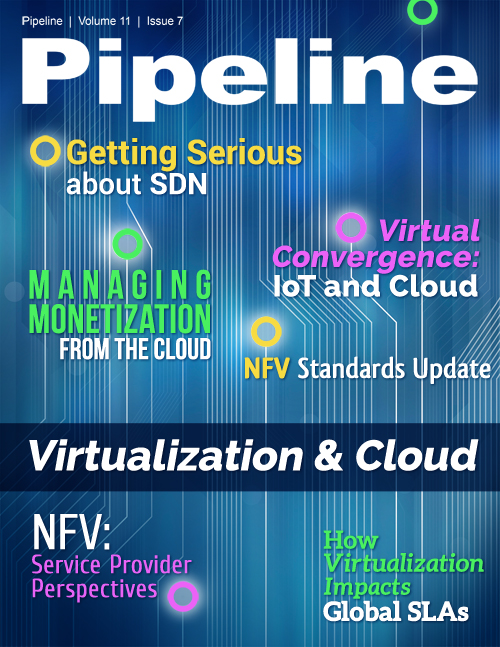Service Provider Perspectives on NFV Business Cases and Plans
By: Grant F. Lenahan
 Operators and enterprises are looking to the cloud to deliver advanced and flexible services more efficiently. At the same time, demand for managed quality, especially by enterprises for mission
critical applications, is driving users toward more stringent service-level agreements and proactive management. Finally, operators understand that neither “one size” nor “one quality level” fits
all their customers and applications. This demands a menu of capacity, availability and other qualities — each matched to various needs and willingness to pay. Cloud and Network Functions
Virtualization (NFV) promise to deliver on this wish list and, in fact, may offer even more benefits over time.
Operators and enterprises are looking to the cloud to deliver advanced and flexible services more efficiently. At the same time, demand for managed quality, especially by enterprises for mission
critical applications, is driving users toward more stringent service-level agreements and proactive management. Finally, operators understand that neither “one size” nor “one quality level” fits
all their customers and applications. This demands a menu of capacity, availability and other qualities — each matched to various needs and willingness to pay. Cloud and Network Functions
Virtualization (NFV) promise to deliver on this wish list and, in fact, may offer even more benefits over time.
NFV is playing a major role, letting operators take advantage of benefits that include:
- Cost savings from improved logistics (e.g., remote management versus truck rolls), automation and increased productivity;
- Reduced OpEx and CapEx costs from using standardized versus dedicated hardware and by vastly reducing configurations;
- Rapid introduction of new services;
- Simplified quality, reliability, performance and security management; and
- Opportunities for previously impractical operations such as “auto scale”, “auto-restore” or “auto move” in response to myriad loads and threats.
With NFV, network node functions are virtualized and can be instantiated on any data center or complying host platform — anywhere in the operator’s network or even at a consumer or enterprise customer’s premises. The functions can then be interconnected (or “chained”) to create higher-level communication services. NFV enables applications to share network resources intelligently and allows operators to orchestrate them efficiently for cost, reliability and performance reasons, and to meet SLA guarantees that are becoming key attributes of product offers.
About Ericsson
Ericsson provides industry-leading OSS/BSS solutions and professional services, based on the deepest and broadest experience in the business. With the agility to help you realize your tomorrow today, our solutions and services are helping operators around the world succeed in the Networked Society. This means being fast, flexible and in control, delivering great experiences to consumers, operating efficiently and developing innovative new offerings for a diversifying market. In a world where mobile, broadband and the cloud are fueling a fundamental transformation, managing the subscriber lifecycle and experience will become even more important and challenging. Look to Ericsson to support your modernization and integration efforts across the full OSS/BSS landscape. www.ericsson.com/ossbss
To assess the current state of NFV business cases and planning, Heavy Reading and Ericsson worked together recently to survey and interview leading communications service providers.
The Survey
The Heavy Reading survey was fielded to 84 qualified respondents from 55 service providers. The majority of responses came from tier one and tier two converged service providers in developed markets that included North America, Europe and Asia Pacific. These operators represent leading-edge thinking on NFV, are most visible in NFV initiatives and are typically two years ahead of tier three, tier four and pure-play mobile operator network strategies.
Almost half of the respondents are responsible for defining their company’s initial NFV business case. They are in corporate management, such as the office of the CTO, or R&D, affirming that NFV is still in its early stages. Most of the remaining respondents are in network planning, engineering and operations, and are typically validating the business case in field trials or pilots.




















